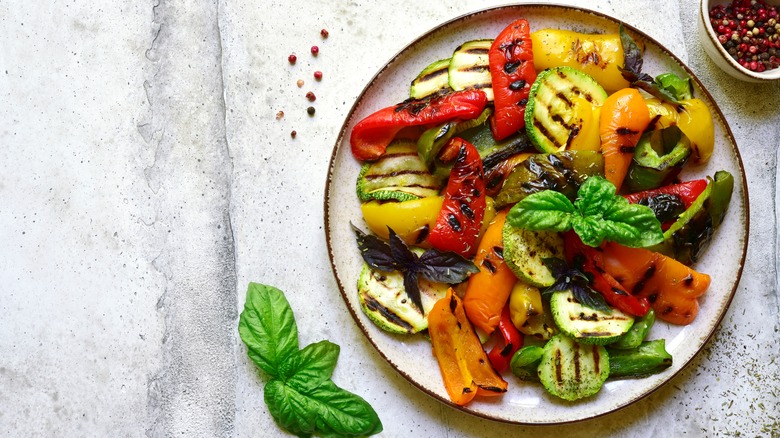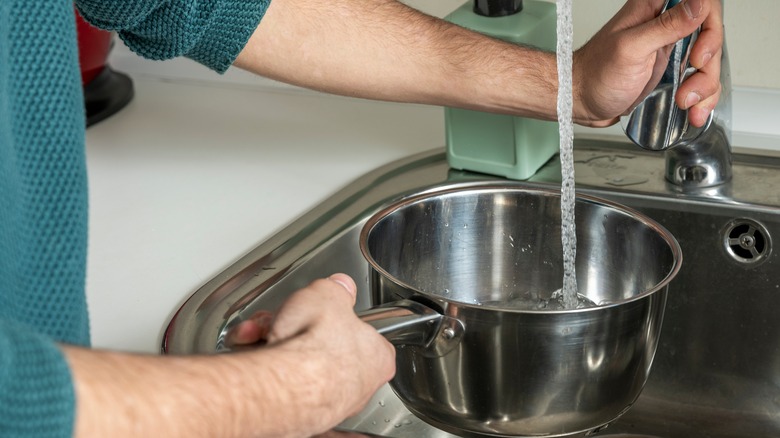The Rule Of Thumb For When To Start Veggies In Cold Vs. Boiling Water
Vegetables are healthy and a necessary part of a well-rounded diet, but there are several reasons people may be hesitant to cook vegetables. First, many people don't always like how they taste, but vegetables can be cooked in various ways to make them more flavorful. Of course, another reason people don't eat enough vegetables is because they don't know how to cook them. Some people may view cooking vegetables as a complex and time-consuming process, causing them to avoid eating the produce, but it's really not that hard to manage.
One of the easiest ways to cook vegetables is to boil them, and while boiling water seems pretty easy to manage, boiling vegetables can bring up more questions. For one, how long you should boil the vegetables? On the other hand, should you start your vegetables in cold or boiling water? The answer is that it depends, but there is one solid rule to follow if you are trying to decide whether you should start your vegetables in cold or boiling water.
Consider whether the vegetable grew underground or above
The basic rule is that vegetables that grow underground — also called root vegetables — like potatoes and carrots, should be started in cold water so that they cook more evenly. Starting the cooking process in cold water allows the vegetables to cook from the inside out and prevents the exterior from overcooking. Vegetables that grow above ground should be added to boiling water. Delicate vegetables, such as leafy greens and broccoli, should be added to boiling water to quickly blanch them. Blanching is a technique that involves boiling the vegetables for a short period of time and then immediately plunging them into ice water to stop the cooking process, preserving the color and texture of the vegetables.
For vegetables that need to be tender but not mushy, such as asparagus and green beans, add them to the boiling water for a brief time, typically 3-5 minutes. This will help maintain the vegetables' texture and bright color. However, if you're unsure, you can always start with cold water and bring it to a boil. This method may take longer, but it gives you more control over the cooking process.
The best way to boil the vegetables
The timing for when to start boiling water for vegetables depends on the specific type of vegetable you are cooking and your desired level of doneness. Generally, you should start boiling the water before you prepare the vegetables. Make sure you cut the vegetables into pieces around the same size so they cook at the same rate. Always use a pot that is large enough to hold all the vegetables you want to boil so that you can prevent overcrowding, which can cause the vegetables to cook unevenly.
Before boiling the vegetables, add salt to the water to enhance their flavor and help retain their color. Keep an eye on the vegetables as they cook, and remove them from the water as soon as they are tender. After all, overcooking can cause them to become mushy and lose their flavor and nutrients. Once the vegetables are cooked, drain them and serve immediately for the freshest flavor.


